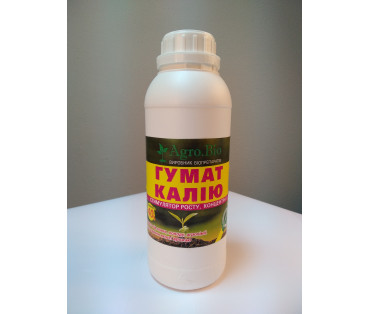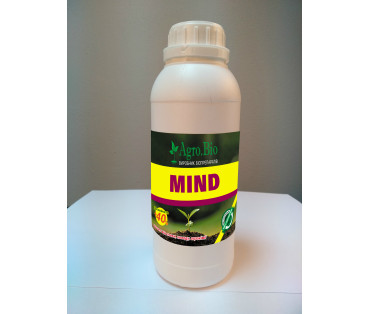What contributes to the accumulation of nitrates in plants? Danger to plants.
Why do nitrates accumulate in plants?
The accumulation of nitrates in plants is associated with great problems in their use.
It is in the form of nitrates that plants absorb most of the nitrogen from the soil. Nitrogen compounds are a source of "raw materials" for the synthesis of amino acids and proteins, it is thanks to them that plant growth occurs.
However, with an excess of nitrogen, the impossibility of its instant assimilation, plants accumulate nitrate nitrogen in the leaves and storage organs.
The inclusion of nitrates in organic compounds in plants occurs both in the roots and in the leaves, and depends on the modes of nutrition of plants and the conditions of their growth. The nitrates that enter the plant are either stored in the vacuoles of the root cells, or are fed with sap to the above-ground organs, especially the stems and leaves.
The danger of nitrates for humans and animals
The high content of nitrates in cells is harmless to plant tissue, but poses a serious threat to human health when such products are consumed as food. Nitrates that come with food are absorbed in the digestive tract of humans and herbivores, enter the blood and tissues, and a significant amount of them after intake is excreted from the body through the kidneys. Nitrates also accumulate in livestock products. For humans, nitrates themselves (nitrate salts) are of low toxicity. Some of them are involved in metabolic reactions, some are converted into useful compounds. The potential danger of nitrates lies in the fact that when they are taken with food, in the digestive tract under the influence of the intestinal microflora, they are reduced to nitrites (NO2-) - salts of nitrous acid and subsequent nitroso compounds, which are very toxic and carcinogenic.
What contributes to the accumulation of nitrates in plants?
The accumulation of nitrate ions in plant biomass can be determined by both external factors (growing conditions) and internal factors (plant species, age). The main external factors include climatic parameters in the plant growing zone: temperature, humidity, illumination, mineral nutrition, irrigation frequency, sowing density, etc. Thus, uneven temperature conditions, especially temperature increase in combination with moisture deficiency contribute to the active accumulation of nitrogenous substances [ 6]. Excess moisture, leading to water stress in plants, also increases the rate of nitrate formation. The increased accumulation of nitrates is facilitated by low illumination, which is associated not only with the arrival of PAR, but also with the density of plant standing. The conditions of root nutrition have the most direct influence on the intensity of nitrate formation in plants. These primarily include the amount and method of fertilization, the physicochemical and mechanical properties of the root substrate. It is well known that an unbalanced mineral diet (especially with an excess amount of nitrogen) leads to an excessive accumulation of nitrates. Also disrupt the normal course of nitrogen metabolism lack of trace elements, especially low availability of molybdenum. Internal factors affecting the intensity of nitrate accumulation in plants are characterized by the individual characteristics of plants - their species, age, variety, response to external conditions, and are largely determined by enzymatic processes,
An increased content of nitrates occurs in plants that receive an excess amount of nitrogen that they are not able to use. With such a high level of nitrate nutrition, the rate of nitrogen uptake often exceeds the rate of uptake, resulting in nitrate "contamination" of plant biomass. It is possible to reduce the content of nitrates in plant products by creating conditions that prevent excessive accumulation of NO3-. First of all, for each culture it is necessary to use its optimal ratio of the main nutrients - NPK. Phosphorus and especially potash fertilizers reduce the negative effect of nitrogen fertilizers. Of great importance is the ratio of nitrogen and individual microelements in the soil, since microelements such as iron and molybdenum accelerate the use of nitrogen compounds by the plant in protein synthesis.
Tips for Reducing Nitrate in Forage Grasses
Autumn liming of the soil with dolomite (taking into account the hydrolytic acidity of the soil and economic feasibility)
Autumn or spring application of phosphate and potash fertilizers to the soil (subject to economic feasibility)
An obligatory measure to reduce the content of nitrates is the treatment of grasses with potassium humate + phosphorus fertilizer (300 ml per ha) 7-10 days before mowing or grazing animals. With constant grazing - processing every 2 weeks
Significantly reduce the content of nitrates (against the background of other measures, increase the efficiency of the assimilation of nutrition by herbs) 2-fold per season treatment with Molybdenum + humate and Iron + sulfur + humate at the rate of 200-300 ml / ha.
The unique Agro.Bio complexes are instantly absorbed by plants, giving them the opportunity to balance nutrition and respiration. The main effect of the use of Agrobio preparations is a sharp increase in the productivity of herbs and their growth rate. The nitrogen that accumulated in the leaves in the form of nitrates, as a result of the complex of treatments recommended by us, activates the growth of grasses and significantly increases the productivity of the pasture!
Related Products
Humate Potassium + Phosphorus «Agro.Bio»
Potassium humate + ballast-free phosphorus from leonardite produced by AGRO.BIO is an environmentally friendly complex fertilizer and growth stimulator for agricultural plants, of organic origin, with..
$7.00
Mind «Agro.Bio»
Organo-synthetic fertilizer Mind "Agro.Bio" from the company Agro.Bio is the optimal growth stimulator for all cereals, vegetable plants, and I would especially like to highlight potatoes and an effec..
$12.00
Related Articles
Influence of humates on plant resistance to the effects of adverse factors and stresses
The humates impact on sustainable plant development. Dependence of the humates effectiveness on the degree of plants development optimal conditions deviation The most important feature of humates..
Introduction to Humates
Potassic humate has amazing properties due to the fundamental role of humic acids in the biosphere of the planet. Their application allows to increase ecological cleanness, nutritional and taste quali..
Humic acids. Analytical study of humic acids
Humic acids (HA) -are the mixture of weak organic acids of aliphatic and aromatic series, which are insoluble in water, in a neutral and acidic medium, but are soluble in alkaline solutions. HA consis..





